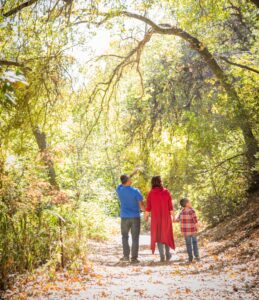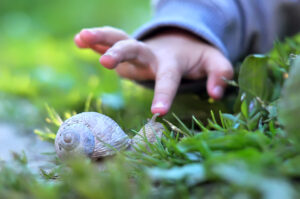Guest Blogger, Colleen Stewart: Tips for Teaching Your Child in the Outdoors

Although most of us are accustomed to the comfort and convenience of learning indoors, the outdoors is often a more engaging and inspiring classroom. Contact with nature and the wider world can make some subjects come alive in a way that classroom-based learning can’t. If you think your child may benefit from learning outside the classroom, here are some tips on how to best prepare yourself and your child for all the educational opportunities that await in the natural world.
Address the Barriers
When you think about teaching your child in the outdoors, what impediments come to mind? For some, it’s an inconvenience. For others, the barriers could be perceived hazards, such as bugs, harsh weather, or uneven terrain. There are always risks in the outdoors, especially for curious children, but, as Verywell Family notes, allowing your child to take risks (while you supervise) will encourage them to trust their instincts and build confidence. This can be stressful for some parents, but it’s a great way for children to develop a healthy relationship with nature.
Create Your Outdoor ‘Classroom’

Your next steps are to choose a location and gather supplies. If you don’t have a backyard (or your yard isn’t suitable), you can venture to a nearby park or other outdoor space. Consider setting up a tarp or large umbrella to protect you from the sun or rain. If you’re heading out to a park, a gazebo or sheltered picnic area can be a great base. Some city and regional parks even let you reserve these areas. If you’d like to stay at home, think about having ‘class’ at night around a fire pit you can build yourself. You could learn about the stars, nocturnal animals, and fire safety, let alone making it really fun by roasting hot dogs and making s’mores!
Some supplies you may need for your classroom are carpet tiles to sit on, pens and pencils, a durable tablet case (if you’re using one), notebooks, rain ponchos, water and snacks, and materials specific to your chosen subjects (such as paints for art class or a magnifying glass for science). Be sure to keep safety in mind, as well, so prepare for the weather as best you can by dressing appropriately and pack a first aid kit. If your lesson plan includes a wilderness hike with your child, Wilderness Times suggests bringing the ten essentials.
Speaking of education, another great way to help your child develop a deeper love of learning is by providing an excellent example. Have you always wanted to go back to school yourself? Perhaps now is the time to finally pursue that degree in education! Also, the flexibility of online programs is perfect for parents in that you can study on your own time, leaving you plenty of freedom to focus on what matters most.
Find Great Course Material
Nearly every subject can be taught outdoors without sacrificing the quality of the content. Outdoor learning can enrich your child’s understanding of some subjects. Nature is the perfect classroom for the STEAM fields — science, technology, engineering, arts, and math. The STEAM subjects are important because they are the foundation for many different careers. If your child shows an interest in these areas (or you’re hoping to inspire a bit of interest), consider local STEAM programs like the Mid-Valley STEM CTE HUB.

Once you’ve narrowed down what subjects you intend to teach, it’s time to plan some fun activities. Nature journaling is a great way to help your child develop a hands-on understanding of biology, and it can be done in your backyard. Also, consider visiting a nearby stream, lake, or tide pool, and have your child draw what they find there. You can later look up the creatures they saw in books or online. Another great activity for outdoor learning and exploration is geocaching. This creative use of technology is like a real-world treasure hunt. It’s fun for both kids and parents, as well as a great way to get some exercise.
No matter where you live or what subjects you plan to teach, you and your child can both benefit from taking the classroom outdoors. If you’re still nervous about teaching outdoors, remember to address any barriers, set up a learning-conducive outdoor space (if you’re not on a nature hike or field trip), and prepare some stimulating course material. You may find that you not only enjoy the time outdoors but that your child gets more excited about learning.
By: Colleen Stewart, colleen.stewart@
Pollywog was developed to align health care, parenting education, and early childhood services for children, prenatal to age five, and their families in Linn, Benton, and Lincoln counties, in Oregon. Call 541-917-4884.